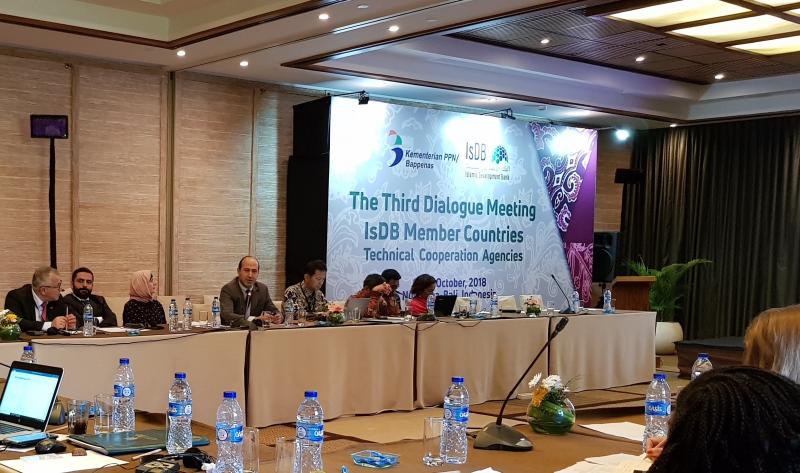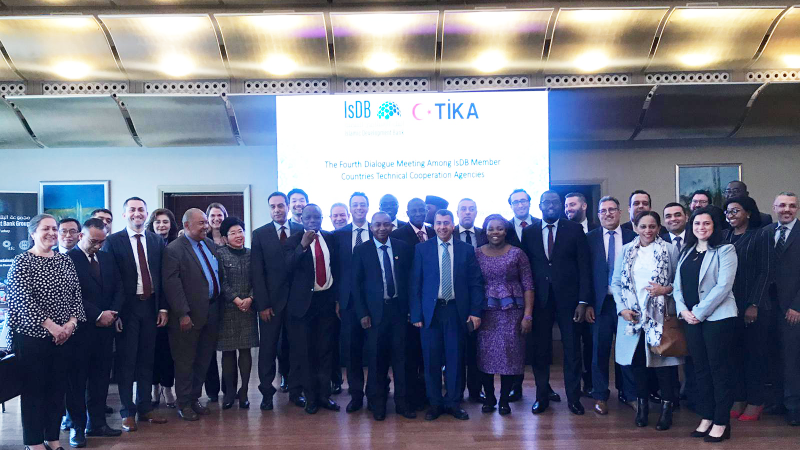To capitalize on this partnership, IsDB organized, on May 2016, a roundtable with Member Countries’ TCAs was organized on the sidelines of its 41st Annual Meeting in Jakarta in order to strengthen partnerships, enhance complementarity and achieve more visible and sustainable results on the ground.
According to the roundtable theme “Scaling Up and Enhancing Partnerships among IsDBG Member Countries for Tangible Results”, the TCAs while recognizing the comparative advantages as well as the wealth of knowledge and expertise of IsDB Members countries, they have concluded that coming together is the best way to achieve noticeable results on the ground. They particularly acknowledged that coordination, collaboration and cooperation among provider and recipient Member Countries are fundamental to improve results and impacts in line with the Sustainable Development Goals.
Thus, they recommended strengthening their partnership through a new framework of action: the “3. 2. C Initiative for Effective Technical Cooperation”, based on three pillars:
- Pillar 1: Convergence & Complementarity.
- Pillar 2: Coordination & Collaboration;
- Pillar 3: Capitalization on Knowledge & Communication.
To translate these pillars into actions, the TCAs agreed to develop a roadmap around the three pillars, for enhancing Technical Cooperation for Sustainable Development among IsDB Member Countries and to convene an annual dialogue meeting for IsDB Member Countries’ TCAs for follow-up.
Three Objectives to Achieve Development and Solidarity
The objectives of the 3 2-C Initiative for Effective Technical Cooperation are:
- Setting up a mechanism of coordination towards achieving sustainable development on the ground;
- Strengthening existing partnerships among Member Countries’ TCAs and with the IsDB and deepening their relations for mutual benefits.
- Contributing towards shaping and influencing the global agenda of the Technical Cooperation, as well as the South-South and Triangular Cooperation.
The Three Pillars of Success
Derived from the conclusion of the meetings held in Jakarta and Jeddah, the Roadmap 2017-2020 of the 3.2C Initiative for Effective Technical Cooperation is structured around three pillars:
Pillar 1: Convergence & Complementarity (High Level/Upstream)
Meaning: Convergence on strategic agenda and complementarity based on comparative advantage.
Purpose: This pillar aims at setting up strategic partnerships and synergy among TCAs, as well as with IsDB, and increasing the strategic positioning and engagement of the TCAs for shaping the international agenda and architecture of the Technical Cooperation and South-South and Triangular Cooperation.
Implications: Moving together at the international level and building on each other’s strengths to ensure that the resources are most efficiently used in pursuit of the joint objectives and results. This will imply harmonizing positions at the international level, adopting joint approaches, developing common understanding and vision and conducting joint planning and programming.
Pillar 2: Coordination & Collaboration (Field Level/Downstream)
Meaning: Coordination of field operations and collaboration by sharing knowledge and resources.
Purpose: This pillar aims at promoting joint operations implementation (programs and projects), whenever feasible and mutually agreeable, among TCAs and with IsDB, toward achieving specific goals and enhancing the efficiency of the technical cooperation efforts.
Implications: Working together in the field and devoting joint resources (workforce and financial) for selected areas with the aim of maximizing the benefits and the impact (i.e. tangible benefits/outcome).
Pillar 3: Capitalization on Knowledge & Communication
Meaning: Capitalizing on acquired knowledge to improve the work and communicating successful initiatives and projects for branding and visibility purposes.
Purpose: This pillar aims at promoting the learning from respective technical cooperation experiences, development partnership initiatives, peer-to-peer learning and knowledge exchange in specific sectors or subsectors.
Implications: Capturing and sharing the knowledge and the know-how gained by working together for the purpose of ensuring sustainability, increasing visibility and creating long term and permanent competitive advantage.

